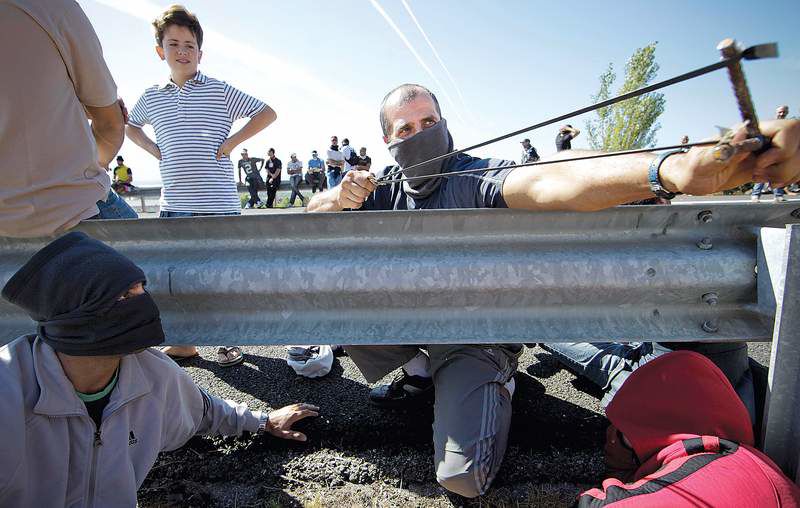Spanish coal miners in Day 9 of unusual underground protest
Published 5:00 am Saturday, September 11, 2010

- A miner practices with a slingshot as miners and supporters block a national highway Friday near San Roman de Bembibre, northern Spain. Miners in several parts of the country — including some 1,650 feet deep in a mine — are protesting over unpaid wages and government aid to the coal industry.
INSIDE LAS CUEVAS MINE, Spain — Far, far away from a Chilean mine where 33 trapped men struggle to cope as they await rescue, 50 Spanish miners are also deep in the earth’s bowels — but by their own choice.
Friday marked Day 9 of an unusual coal miners’ protest, a sit-in staged 1,650 feet underground. No showers, no toilets, no Internet and soot-dusted mattresses are a small price to pay, the miners reason, in exchange for a more hopeful future for their beleaguered industry.
Their strike in northern Palencia province is the culmination of a long dispute over unpaid wages and the future of an antiquated industry struggling to survive as it competes with gas-fired electrical utility plants and heavily subsidized renewable energy projects. To make matters worse, all these sources of energy are seeking aid from a government grappling with a recession, high unemployment and a debt crisis.
Spain’s coal mining industry employs about 10,000 people, down from 50,000 in the late 1970s.
The Spaniards underground vehemently deny any suggestion they are cashing in on the South American crisis where the Chileans have been trapped in a cramped shelter for a month, saying the two dramas overlap only in time. They acknowledge their plight is by choice, nowhere near as perilous and can end whenever they choose.
“You have to think about their situation. Their thing is about survival. Ours is about asserting ourselves,” said Juan Carlos Liebana, 41, wearing a white hard hat turned gray with coal soot. “We send them hope and unity.”
His colleagues sat in near silence at a long wooden table in the dim light. They read newspapers sent down daily by relatives and ate hot food like pasta and bean soup, gaining strength by looking at family photographs and messages.
Like a makeshift clothesline, a rope attached to one wall where coal is collected from the mine’s shafts exhibits letters and pictures from the miners’ children.
One crayon rendering showed a man dressed in a miner’s blue jumpsuit standing next to a small boy. It read: “Daddy, I love you and I miss you. Hang in there so nothing happens to you. Love, Ivan.”





